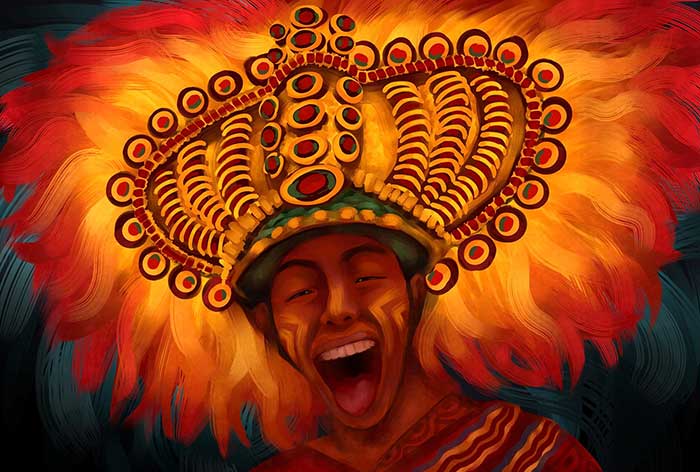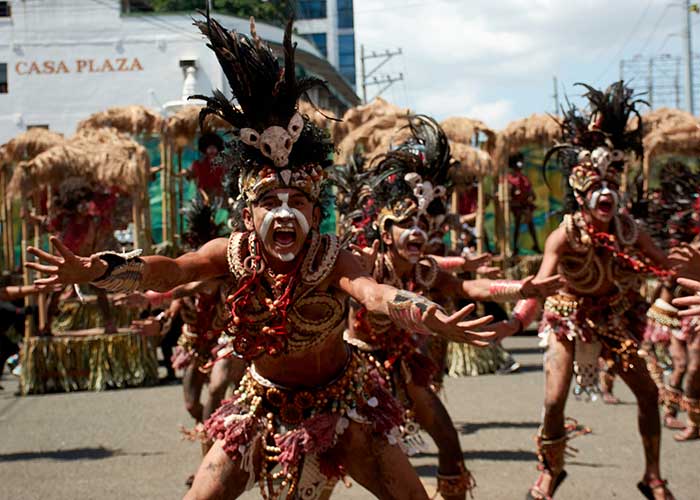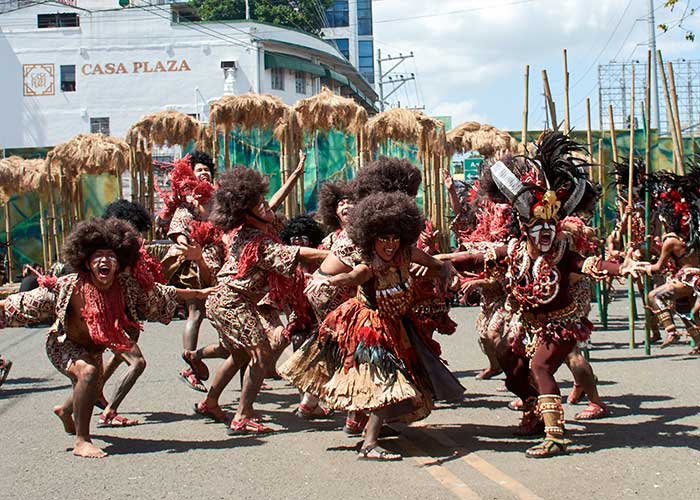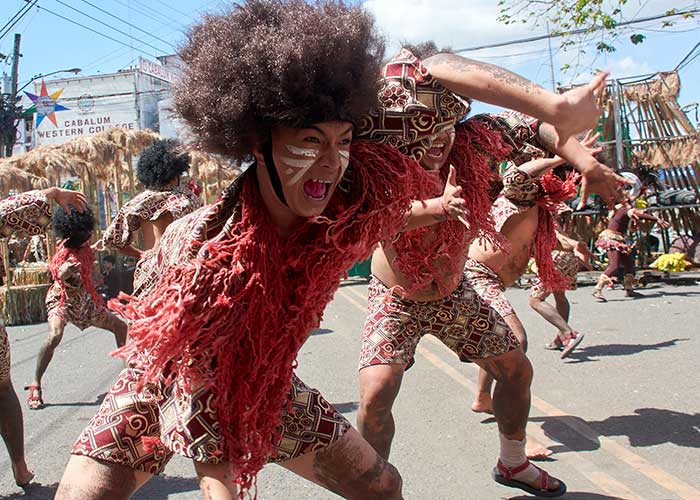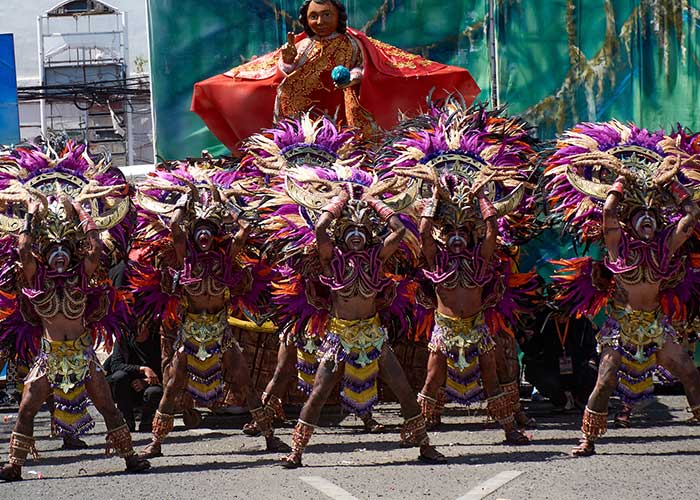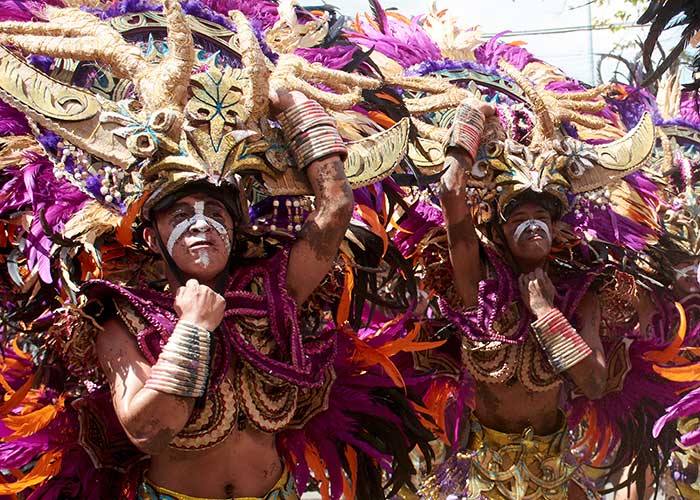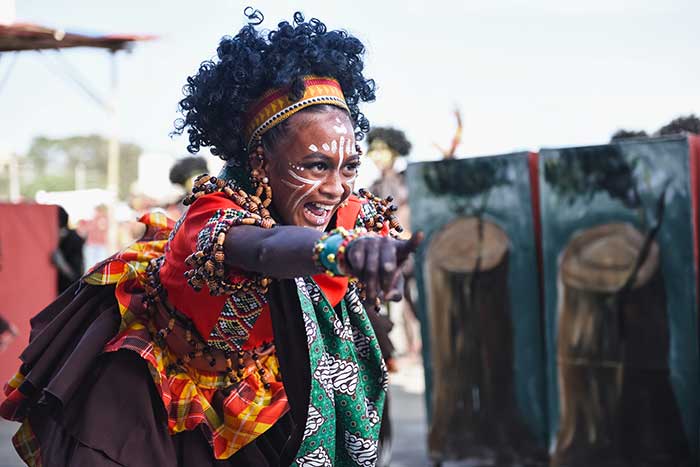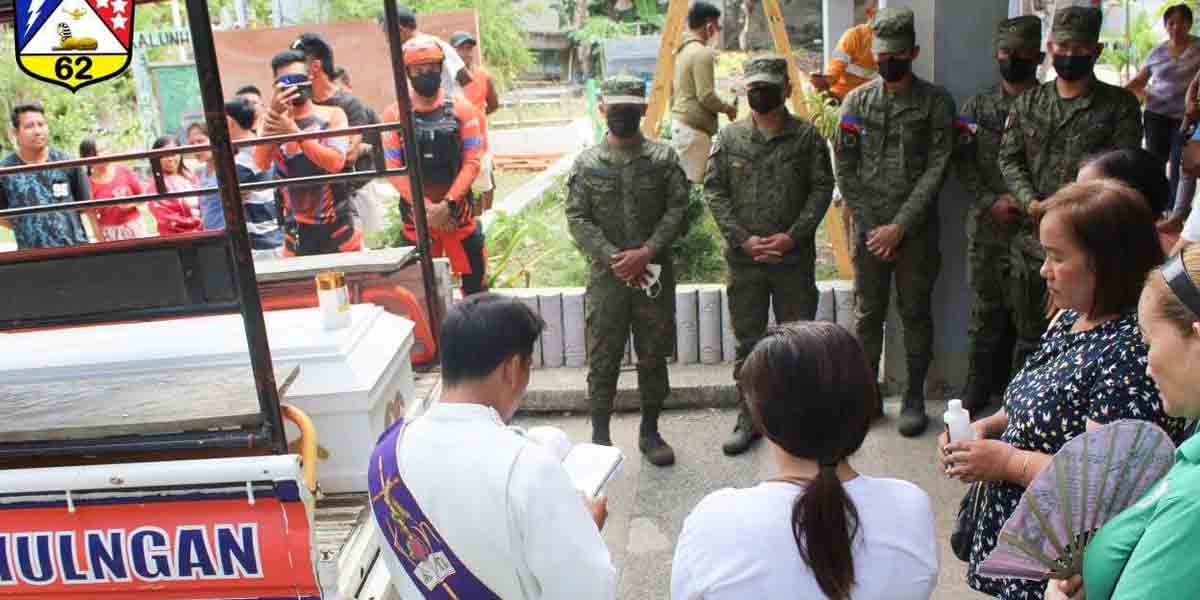By John Anthony S. Estolloso
WHILE MUCH have been said and written about Dinagyang as a religious festival and as a cultural celebration, there are sparser conversations about the annual festivity as street theater.
Watch one, even just one, performance of a competing tribe and you will encounter the essential elements of the theatre magnified in the most spectacular dimensions; of course, at its core would be the creative storytelling and the deep-seated characterization that gives the celebration much of its festive spirit.
Yet this piece of street theater that makes its presence felt every January is often viewed and understood through a purely devotional or cultural lens. What of its thespian aspect – to paraphrase Whitman’s verse, the performed compendium of powerful plays that goes on annually?
For even in its most basic staging, the Dinagyang is inherently a public spectacle, requiring a public arena and the public gaze. Not unlike the dramaturgy of ancient Athens or the rotund spaces of the Elizabethan theatre, it is cut as communal art and entertainment. In the reiteration of narratives, the rhythmic statements of musical themes and motifs, the ostentatious display of pageantry and costumery, and the mise-en-scène of set designs is the coming together of artists and audience to retell once more the stories the build up our imagined past and heritage.
With such, the festival fulfills the basic function of theatre: in retelling these legends and plots, it takes slices of mythological time – that is, a recurring ‘present’ transcending chronological time – and projects the events in a shared space, as informal instruction or sheer diversion. It then becomes a meeting place where the contemporary must come to terms with the ‘re-imagined’ past, an aspect of theatre that has not changed much since the times of Sophocles or Shakespeare.
By understanding or reinterpreting what is believed to be plausible (though not necessarily factually true) in this past, the Dinagyang infuses a religious verve to the mythology. Beneath the feathery plumes and chromatic headdresses, the overly ornate spears and shields, the hypnotic drumbeats and skirls, the frenetic leaping and swaying of heroes and warriors, and the gargantuan sets and props looming and moving through the streets are the integral legends of Ilonggo heritage intertwined with a populist and intense devotion to the Santo Niño.
At the heart of the festival’s storytelling is its remarkable characterization. Albeit the absence of a spoken script, choreographic movement and gestural nuance performed en masse move the plot forward. Augmented by theatrical cosmetology, costumery, and heavily rhythmic notation, the Dinagyang can easily be charged with exoticism – yet for some reason, our Ilonggo sensibilities do not find this masquerade of blackface racist or culturally inappropriate at all.
Ultimately, Dinagyang as street theater involves both performer and onlooker. More than just the execution of theatrical elements, there is the encouragement to the audience to take part in the performative and thus, the festival climaxes to the carefree street-dancing and merrymaking of its evenings, an elusive reminder that the theatrical art in its Athenian infancy was a Bacchic festival, replete with wine, choric song, and bawdy humor.
One hears in the panáad an echo of the invocation to the divines recited by the masked Chorus at the start of the drama. In the sádsad and dagyang at the streets, we see glimpses of a modern and subdued bacchanalia while the Dionysian rites of alcoholic libations and burnt oblations are reincarnated by the evenings’ merrymaking inebriated with beer and barbecue of the food stalls.
*****
January of next year would find the same spectacle staged at our streets – and quite rightly so. The theatricality of the Dinagyang is the Ilonggos’ effusive outburst of religious fervor melded through an amalgamation of artistic mediums, familiar yet also fresh to their sensibilities.
The stories will be somehow similar to the previous years’, the musical instruments will be the same, the visual designs thematically parallel to previous performances, but they will always be new to the audience, locals and tourists alike. After all, the Dinagyang is street theater: there is nothing inherently original there, only the novel and the well-loved that makes the powerful play go on.
[The writer is the subject area coordinator for Social Studies in one of the private schools of the city; the artwork is by Kyle Benedict Sioco. Additional photos courtesy of Al Destacamento and Ramil Gorrieza]


















